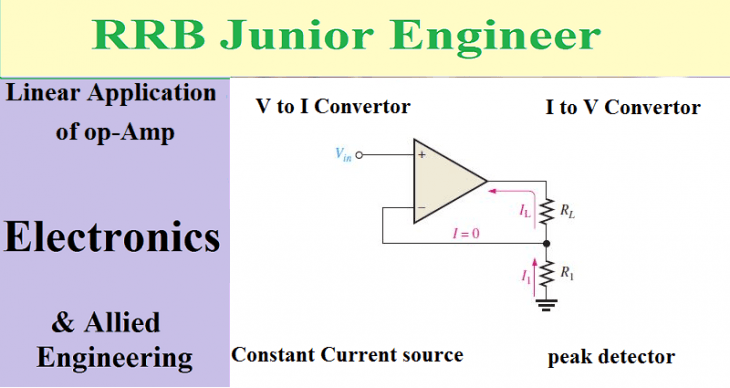
This section introduces Op-Amp current voltage converters such as
the current-to-voltage converter, the voltage-to-current converter and constant-current source & the peak detector.
Contents
Constant Current Source using op amp
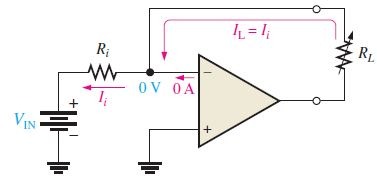
Constant Current Source using op amp
Due to stable voltage supply and virtual ground in inverting terminal a constant current is generated. Input resistance of op-amp is extremely high (ideally infinite), so negligible current passes through the opamp. Thus almost all constant current pass through the feedback path. As shown in the figure resistance in feedback in the path is variable. Even if the voltage in feedback is changed, current through the path remains constant. Because of the virtual ground and stable voltage supply.

Current to Voltage Converter using op-amp
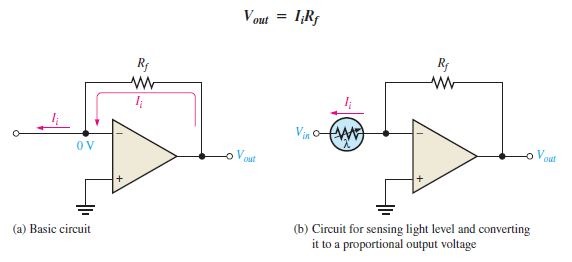
Current to Voltage Converter using op-amp
Current to Voltage Converter converts a variable current source to corresponding voltage. Figure (a) shows a basic Current to Voltage Converter, here input current ideally never feed into opamp terminal. Thus input current completely flow through feedback resistance. Which results in a voltage across feedback resistor. Left side of the resistor is virtual ground (0 V), thus voltage across the feedback resistance is equal to
output voltage of op-amp.
Voltage to Current Converter using op-amp
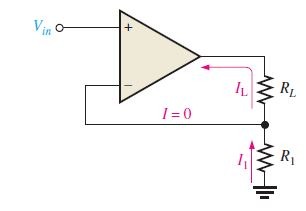
Voltage to Current Converter using op-amp
Basic circuit of Voltage to Current Converter using op-amp is shown above. By basic characteristics of op-amp, potential at both the terminals are same. so inverting terminal have the same input voltage \(V_in\) (neglecting offset voltage). Thus voltage across \(R_1\) is equal to \(V_in\), so current \(I_i\) corresponding to \(V_in\) is generated and it never flows to the inverting terminal (extremely high input resistance of op-amp). Therefore entire current \(I_i\) flows throw the load resistor.
Peak Detector using op-amp
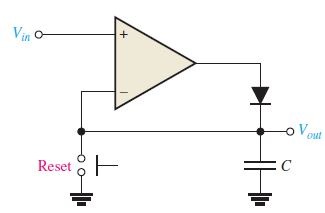
Peak Detector using op-amp
A basic Peak Detector using op-amp is shown in the above figure. When an input voltage is applied to the non inverting terminal. an output is generated and which make the diode in forward bias. The current flowing out of diode is charged into the capacitor. capacitor charged up to a value equal to maximum value of input voltage and thus both input of op-amp have same input. At this point, the opamp switches, and its output goes to the low level. As a result diode become reverse biased and capacitor stops charging. This final charge of capacitor is the peak value of input signal. It will eventually leaked to zero or it can be reset to zero suddenly by closing the reset button.
This section discussed Op-Amp current voltage converters, constant current source and peak detectors. For other topics in op-amp check the links provided below